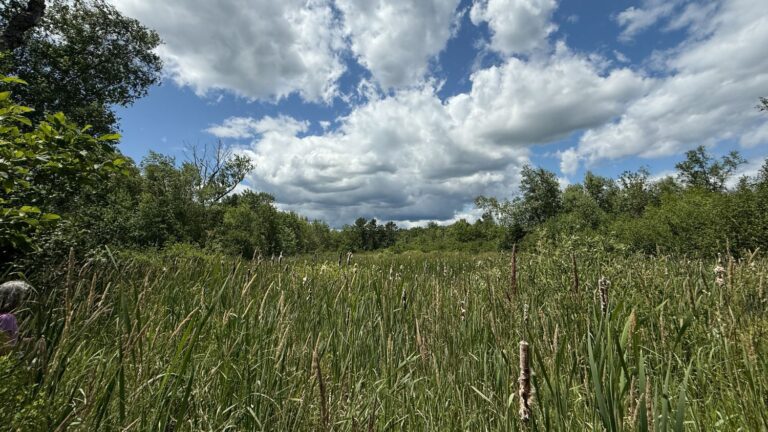Editor’s Note: The following story first appeared in The Maine Monitor’s free environmental newsletter, Climate Monitor, that is delivered to inboxes for free every Friday morning. Sign up for the free newsletter to get more important environmental news from reporter Kate Cough by registering here.
Perhaps you saw the piece The Monitor published earlier this week, about a request from the Poland Spring bottling company to double the amount of water it extracts from one of its wells in Hollis, in a region that’s been suffering (like much of the state) from an ongoing drought. (If you haven’t, you should read it.) The request has rankled many area residents, some of whom have seen their wells run dry, including one who is struggling to care for her 35 sheep, five horses, and four goats.
This is not the first time an issue like this has come up with Poland Spring, which was acquired by two private equity firms last year. Five years ago I wrote my master’s thesis about a similar scenario unfolding near Rumford: the company wanted to tap an aquifer in the Ellis River, close to where the town has one of its two municipal wells.
The bottled water giant wanted to withdraw up to 100 million gallons each year, enough to provide a day’s worth of water to anywhere between 300,000 and 1.2 million Americans, who, depending on which Environmental Protection Agency estimate you look at, use between 82 and 300 gallons per household, per day.
How much and what we use that water for varies widely. Use is often higher in hot, dry places, where residents use it to keep lawns and plants alive. Here in Maine, one of the wetter states in the country (all evidence of recent weeks to the contrary), we hover around 64 gallons per person, per day, or 256 gallons per day for a four-person household.
The request six years ago from Poland Spring to drill a new borehole in Rumford worried a lot of residents. That year, groundwater levels in the state were lower than they had been in up to 35 years, according to the U.S. Geological Survey. Private wells were running dry, some for the first time in decades. The following year, Poland Spring would cut its water withdrawal amid a severe drought, according to reporting in the Portland Press Herald.
But groundwater levels fluctuate with the seasons, and overall levels in Maine held steady throughout the decades. Aquifers are reliably refilled each year, including the Ellis River. And, unlike many areas of the world that are drying up due to climate change, the Northeastern United States is projected to get even wetter in the future. Warmer temperatures mean more rain instead of snow, and more intense rainfall at that.
“Geologically and hydrologically, California and a lot of the western U.S. is a desert,” Roger Crouse, head of the Maine Drinking Water Program, told me when I interviewed him in 2015. He thought that, while the state should monitor its use carefully, concerns about aquifer depletion in the region are largely unfounded.
“If we ever get to the point in Maine where we’re rationing water in the way that other states have had to, the rest of the country is already on fire.”
The problem, however, is that even if aquifer levels hold steady on an annual basis, there may be an imbalance at certain times of the year, especially as the state sees increasing periods of drought due to climate change. Half of Maine’s sixteen counties were experiencing severe drought as of earlier this month, and parts of all except one were at least abnormally dry.
“The climate of the northeast region will get wetter,” Dr. Sean Birkel, Maine State Climatologist, told News Center Maine this week. The tendency toward extremes means that, in a warmer climate, there will be an increased likelihood of both drought and heavy rains, said Birkel. As temperatures rise, enhanced evaporation will mean that the impacts of any droughts that do happen will be intensified.
Whenever the question of drawing more water comes up, the question of who owns that water, and what impact their use has on those around them, follows. That was the question that Nina Fuller, who owns a sheep farm about six miles from the Poland Spring wells in Hollis and who has been without water for a week, told The Monitor she wanted answered. Did Poland Spring’s withdrawal have any effect on her well? (It’s worth noting that Crouse told me back in 2015 that the state has sent investigators out in cases like this before, but that he couldn’t think of an instance in which Poland Spring’s withdrawal was found to be the cause of a dry well.)
In Maine, lakes and rivers are a state resource, but groundwater water rights fall under what is known as Absolute Dominion, meaning that whoever owns the land owns the water below it. Absolute Dominion laws have come under fire from some advocacy groups who want to see water held in the hands of the public.
One of the central arguments made against Absolute Dominion is that it doesn’t take into account an individual’s water use impact on neighbors, and some fear that one user could monopolize the water supply. Advocacy groups such as Food and Water Watch periodically introduce legislation aimed at changing this by transferring water rights from private citizens to a public trust. Such a transfer would align the laws around ground and surface water in Maine, said Nisha Swinton, a senior organizer with Food and Water Watch.
But not everyone agrees. Crouse felt the proposed law was a solution in search of a problem, and wondered whether it would place limitations or more onerous regulations on private homeowners. And while 100 million gallons sounds like a lot, a letter to residents from the Rumford Water District stated that Poland Spring’s proposed daily extraction would be “the equivalent of a 2 ounce shot glass” from a 5 gallon bucket that is continuously refilling each day.
But as periodic droughts intensify, these type of questions around ownership and extraction will likely come more to the forefront, even in Maine, where 24 trillion gallons of precipitation fall each year. A bill that became law in May established a commission tasked looking at the availability of water, the transportation within and exportation outside of the state, the sustainability of Maine’s aquifers, and the relationship between water resources and climate change, among other topics. The group’s recommendations and findings are due in early November.
In the case of Rumford, Poland Spring eventually cut a deal allowing it to draw up to 150 million gallons of water per year for 15 years from two district wells, according to reporting by Maine Public. In Hollis, town officials have hired an independent hydrologist to review the company’s request; the issue is on the agenda for the Hollis Planning Board meeting on August 24.
One thing is clear: in a warmer, wetter Maine, it’s certain this won’t be the last time we worry over water.
To read the full edition of this newsletter, see Climate Monitor: Worries over water percolate in a warmer, wetter Maine.
Kate Cough covers climate change and the environment for The Maine Monitor. Reach her by email with ideas for other stories at gro.r1753902146otino1753902146menia1753902146meht@1753902146etak1753902146.








